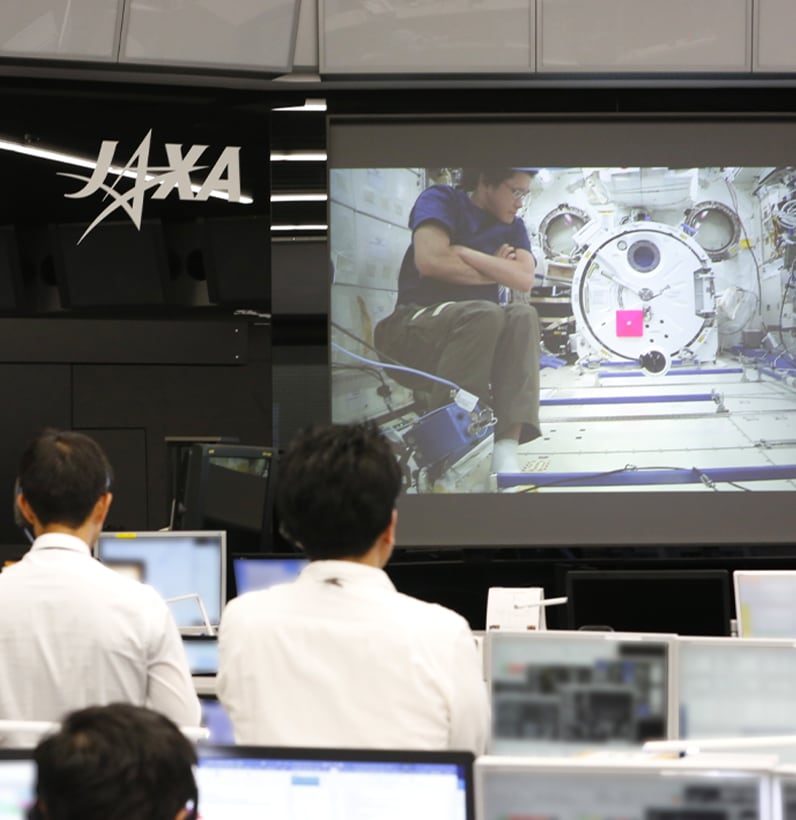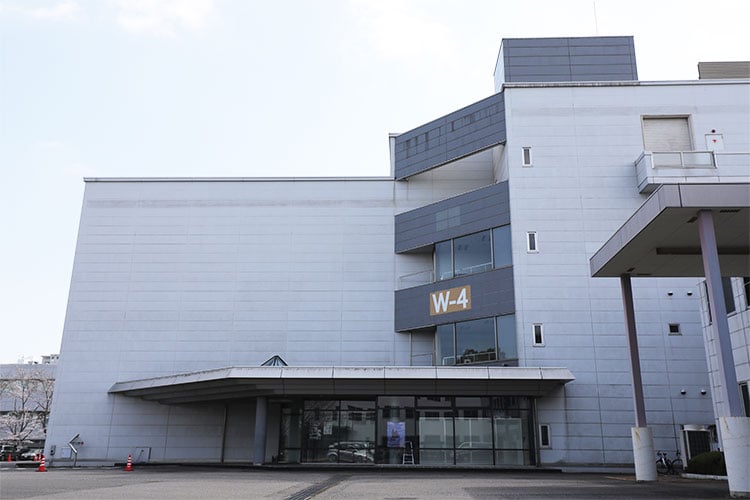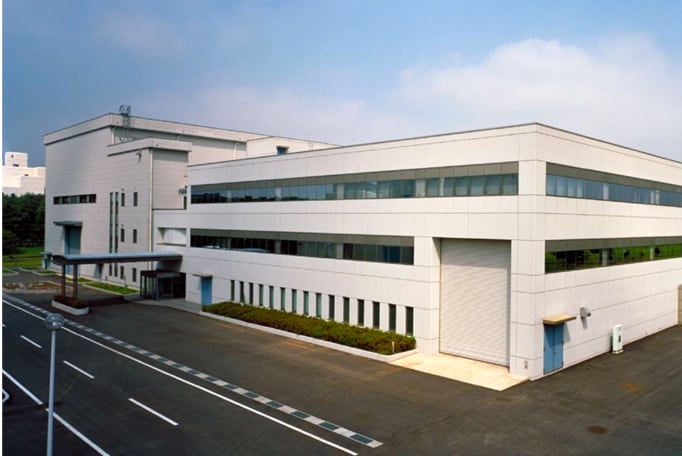Operation of “Kibo”
To conduct various missions in Kibo, flight controllers and astronauts work together.

Flight controllers are
an important Kibo's crew on the ground.
Flight control team including various specialists operates the Japanese Experiment Module (JEM) “Kibo” from Tsukuba Space Center. In addition to monitoring status of onboard experiment equipment in Kibo, they control all of the Kibo’s systems such as internal temperature and air conditioning, electric power and communications 24 hours a day to maintain an optimal environment for astronauts. Ground-based support is essential for astronauts engaged in carrying out activities at Kibo.

Tsukuba Space Center:
The closest thing to Kibo on earth.
Kibo is controlled remotely from Tsukuba Space Center (TKSC) via the US Tracking Data Relay Satellite (TDRS). The JEM Mission Control Room (JEM MCR), which conducts systems operations for Kibo, and the User Operations Area (UOA), which conducts experiment operations, are located at the TKSC.





Kibo development and operations facility
The Space Station Integration and Promotion Center (SSIPC) at Tsukuba Space Center serves as the development and operations facility for Kibo.
- Develop and operate Kibo
- Support space experiments at Kibo
- Acquire and accumulate human spaceflight technologies, including ISS crew training





Unless specified otherwise, rights to all images belong to ©JAXA



